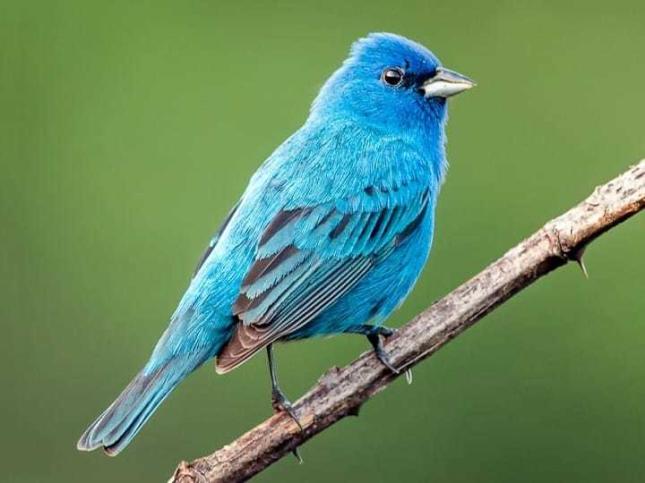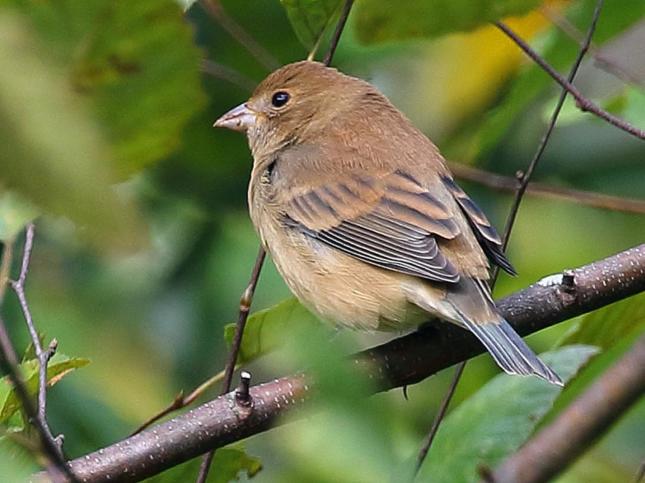

Fun Facts About Indigo Buntings
- The all-blue male Indigo Bunting sings with cheerful gusto and looks like a scrap of sky with wings. Sometimes nicknamed "blue canaries," these brilliantly colored yet common and widespread birds whistle their bouncy songs through the late spring and summer all over eastern North America. They're common on the edges of woods and fields; along roads, streams, rivers, and powerline cuts; in logged forest plots, brushy canyons, and abandoned fields where shrubby growth is returning. While migrating and in winter, Indigo Buntings forage in fields, lawns, grasslands, rice fields, as well as in shrubs, and trees.
- Indigo Buntings eat small seeds, berries, buds, and insects. Common seed forage includes thistles, dandelions, goldenrods, and grain such as oats; berries eaten include blueberries, strawberries, blackberries, serviceberries, and elderberries. Spiders and insect prey, which form the majority of their diet during summer months. On arrival to breeding grounds in spring, Indigo Buntings may feed on twigs, buds, and leaves of trees including aspen, cottonwood, oaks, beech, elm, maple, and hickory.
- Indigo Buntings nest in fields and on the edges of woods, roadsides, and railroad rights-of-way. The female chooses a concealed nest site in low vegetation, within a meter of the ground. She locates the nest in a crotch or fork where branches meet, amid a supporting network of vertical and diagonal twigs. Occasionally an Indigo Bunting builds her nest in crop plants like corn or soybeans.
- Foraging for seeds and gleaning insects off branches in low vegetation, Indigo Buntings hop along the ground and cling athletically to stems and reeds. Singing males tend to perch high in shrubs, trees, or on telephone lines. When disturbed, an Indigo Bunting may fly to the top of a shrub, raise its crest feathers, and swing its tail from side to side. Indigo Buntings usually forage alone during the breeding season; on their wintering grounds and during spring and fall migration, they feed in flocks on lawns and open grasslands. Males defending territory approach each other with slow, fluttering "butterfly" display flight, holding their wings at right angles to their bodies.
- Like all other blue birds, Indigo Buntings lack blue pigment. Their jewel-like color comes instead from microscopic structures in the feathers that refract and reflect blue light, much like the airborne particles that cause the sky to look blue.
- The oldest recorded wild Indigo Bunting was a male, and at least 13 years, 3 months old when he was recaptured and rereleased during banding operations in Ohio.

